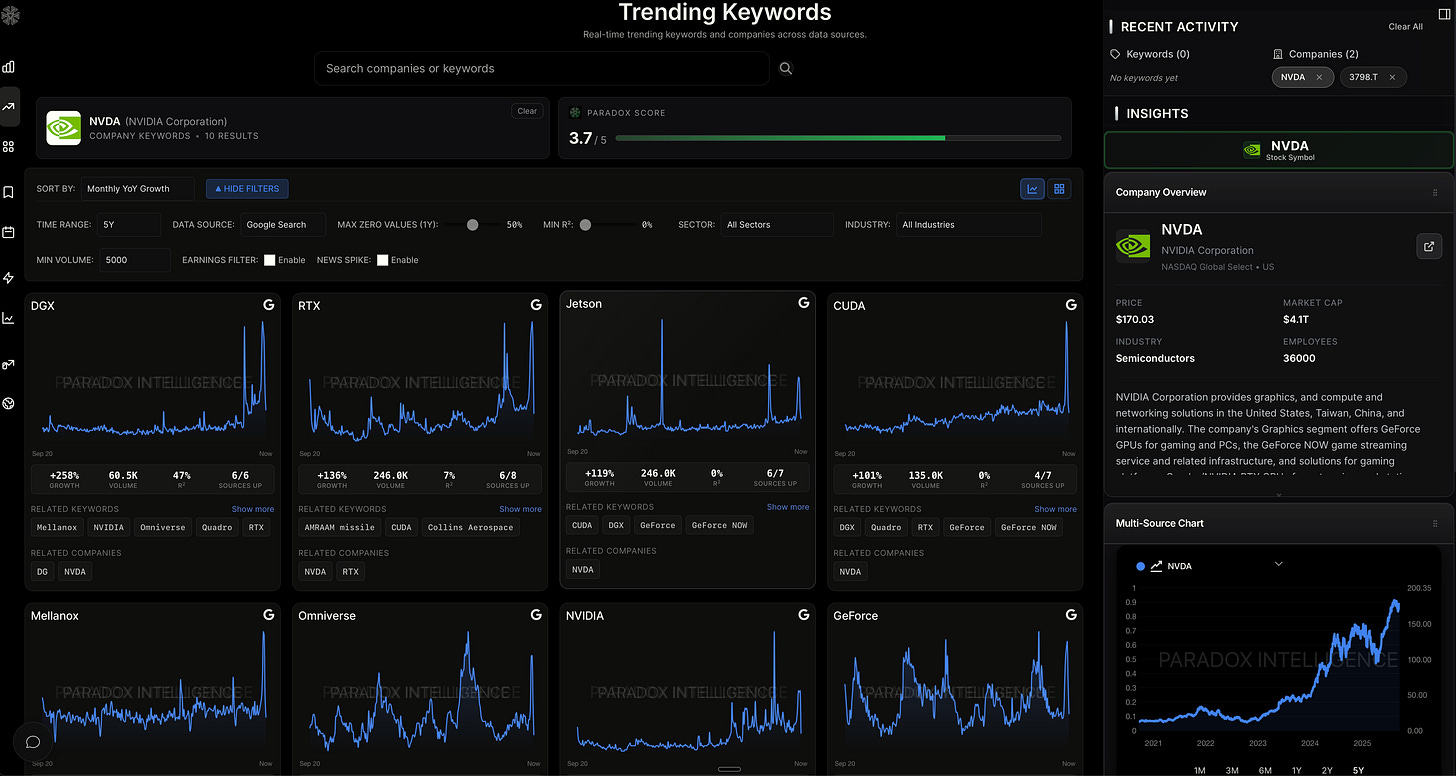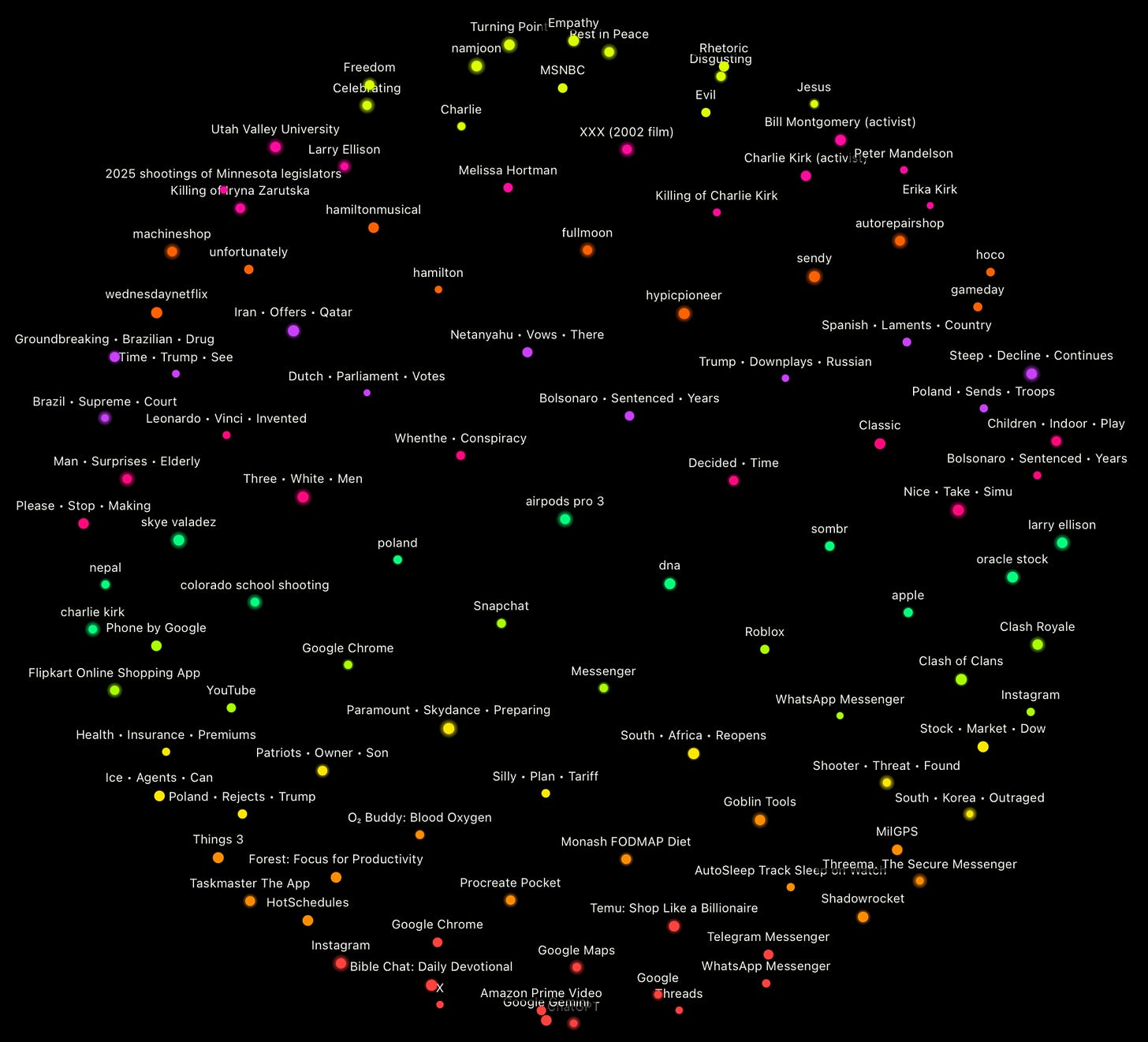The Future of Equity Research and The Information Arbitrage Advantage
AI and Alternative Data Driving Smarter Investment Insights
Equity research is undergoing a fundamental transformation. Traditional approaches, where analysts sift through dense regulatory filings, earnings call transcripts, and financial statements, are becoming increasingly inefficient. By the time most research reports are published, the market often has already moved. To meet the demands of greater speed and depth, the industry is turning to artificial intelligence (AI) combined with the alternative data sources.
Addressing the Limitations of Traditional Investment Research
Traditional equity research is hindered by structural challenges that limit its ability to generate alpha, driven by human biases and reliance on outdated systems. As markets move faster and diverse information sources expand, these limitations are increasingly evident, reducing the effectiveness of conventional approaches.
The Consensus Trap
Traditional research creates a dangerous herding effect where analysts using identical backward-looking data sources inevitably reach similar conclusions. When every research report relies on the same quarterly filings, earnings transcripts, and financial statements, differentiated insights become impossible. This consensus clustering eliminates the contrarian thinking essential for alpha generation, leaving institutional investors with homogenized recommendations that offer no competitive advantage.
Information Lag
The traditional research cycle operates on quarterly reporting schedules while markets move in real-time. Regulatory filings arrive 45-90 days after quarter-end, meaning the "latest" financial data is already obsolete before analysis begins. By the time research reports are published, market conditions have shifted, competitive landscapes have evolved, and investment opportunities have vanished. This structural delay makes traditional research a lagging indicator rather than a predictive tool.
The Unstructured Data Blind Spot
Traditional research often overlooks a vast array of relevant corporate information by focusing exclusively on structured financial data. Critical business intelligence extends beyond traditional analysis frameworks, encompassing diverse sources like the broader internet, social media, supply chain disruptions, employee reviews, patent filings, and real-time consumer behavior. This selective blindness creates massive information gaps that competitors using non-traditional data can exploit.
New AI-powered platforms address these fundamental limitations by automating data collection and synthesis across multiple sources. This automation enables:
Real-time processing of structured and unstructured data streams
Identification of emerging patterns before they appear in traditional metrics
Generation of differentiated insights from alternative data sources
By eliminating the operational burden and information gaps inherent in traditional research, these tools enable analysts to focus on what truly matters: generating differentiated insights.
The Growing Role of Alternative Data
Alternative data encompasses a wide range of innovative sources that enhance traditional financial information. It empowers investors to gain high-confidence insights into emerging trends and opportunities well before they appear in conventional financial metrics. Key sources include:
Consumer & Behavioral Data
Social media sentiment and engagement metrics across platforms
Credit card transaction patterns and spending velocity
Mobile app usage and download trends
Web scraping data from e-commerce platforms and pricing intelligence
Geolocation data tracking foot traffic to retail locations
Operational & Supply Chain Intelligence
Shipping and logistics data including port activity and cargo movements
Energy consumption patterns from utility data
Patent filings and intellectual property trends
Supply chain disruption indicators
Satellite imagery for real-time observation of operations, construction progress, and logistics, store visits
Geolocation Data - Paradox Intelligence
Combining multiple non-traditional data streams improves the accuracy of research by providing cross-validation and reducing the risk of false signals. This richer, more diverse data environment enables investors to detect market shifts and corporate developments earlier than conventional analysis alone.
The Information Arbitrage Advantage
The fundamental question in investing is simple: what drives a stock price? Prices move when investors react to new information they view as positive or negative. Gaining an edge means accessing this impactful information before the broader market does.
This is information arbitrage - the systematic detection of validated signals before they surface in traditional news, earnings reports or analyst recommendations.
Early Consumer Behavior Detection
Modern AI-driven Data Platforms map consumer intent and behavior patterns as they emerge across the web - including search, social media, app usage, and spending data. While traditional analysis waits for the news and quarterly reports to reveal meaningful change, these systems capture the earliest signals of shifting preferences and purchasing patterns with conviction.
The advantage is timing: consumer behavior changes appear in digital activity weeks before they manifest in traditional financial data. By detecting these patterns early, investors can position themselves before consensus forms around emerging trends.
Case Study: Byrna Technologies ($BYRN) – Viral Marketing Ignition
Opportunity Detected: In August 2025, Paradox Intelligence identified explosive growth signals from Byrna Technologies' AI-generated "We Don't Sell Bananas" campaign. Alternative data revealed 66 million video views across TikTok and YouTube, a 47% YoY surge in "Byrna"-related Search engine searches, and a 50% spike in website traffic to over 50,000 daily sessions. Despite negative social media sentiment, with widespread criticism labeling the ad as "creepy AI slop" and mocking its bizarre banana imagery, the controversy significantly boosted visibility. This negative perception drove engagement, as detractors amplified the campaign’s reach, contributing to a 31% sales surge in early August.
Impact: These early indicators preceded a 31% sales boost in early August, positioning Byrna for market share gains in the $9 billion non-lethal weapons sector. Current data signals a strong performance ahead of the upcoming earnings report.
Real-Time Pattern Recognition Across the Internet
Instead of consuming the same information as everyone else, new systems map real-time data flows across billions of interactions, searches, and communications worldwide.
These systems read what's actually happening by analyzing the collective digital activity of global populations. This is as close you can get to reading peoples mind and predicting consumer intent before it happens. It detects emerging patterns and cascade effects before they reach traditional news outlets, providing access to the world's collective intelligence as it unfolds in real-time.
Case Study: Pop Mart ($9992.HK) – Trend Exhaustion Warning
Risk Detected: Alternative data flagged the fading Labubu craze for Pop Mart, the Chinese toy giant whose viral blind boxes propelled CEO Wang Ning to China's 10th richest with a $27.5 billion fortune, with Search Engine traffic down 43% for "Labubu," #Labubu TikTok views off 11%, resale prices dropping 20%, and website traffic plunging 70%. These signals preceded stock declines amid demand concerns.
Impact: With Labubu comprising 60%+ of revenue, the trend's maturity exposed inventory and margin risks, enabling short positions before broader market anticipation. This contrarian signal underscores how declining digital engagement can predict fundamental vulnerabilities.
Signal Synthesis and Early Warning Systems
New AI systems take in diverse data streams to identify the earliest possible signals of meaningful change. By combining traditional financial metrics with carefully validated alternative data, these systems surface crucial information at the moment it becomes detectable.
This isn't about having more data - it's about having the right signals at the right time. These systems filters noise to deliver high-conviction insights that enable faster, more confident decision-making.
Case Study: GoPro ($GPRO) – Hidden Data Asset Unlocked
Opportunity Detected: Paradox Intelligence spotted a paradigm shift in GoPro's business model via its AI Training Licensing program. In just two weeks post-launch, subscribers contributed 125,000 hours of POV video data, with "GoPro AI training" searches up 300% MoM. This untapped 450-petabyte dataset positions GoPro as a key supplier for humanoid robotics training.
Impact: Initially a modest revenue opportunity at typical service rates, this could evolve into a high-margin licensing business, transforming GoPro from a hardware-focused company into a key AI infrastructure player. Early detection enabled positioning well before the market adjusted its expectations.
The Competitive Reality
The future of equity research isn't about having access to more data. It's about having the right tools to detect meaningful change before others see it.
For investors, this represents a fundamental shift: from reacting to market movements to anticipating them. The capability to spot emerging shifts weeks before consensus forms provides the sustainable informational edge that drives superior performance.
Investors that will thrive are those that embrace information arbitrage as their core competitive advantage - combining traditional financial expertise with the ability to see around corners and act with conviction on early signals.
This analysis is for informational purposes only and does not constitute financial, legal, or investment advice. Readers should conduct their own research and consult with qualified professionals before making any investment decisions.









